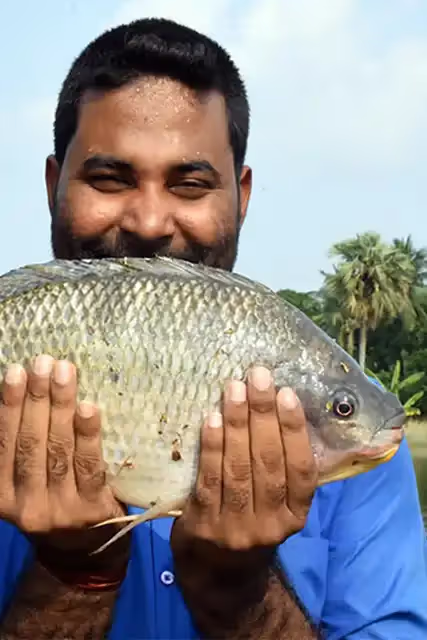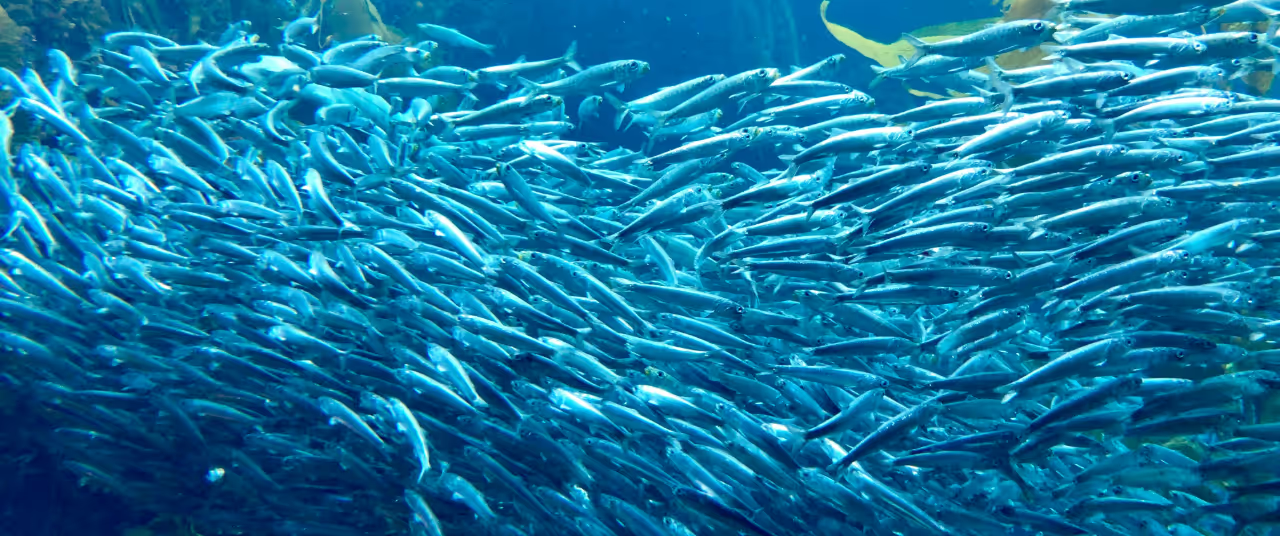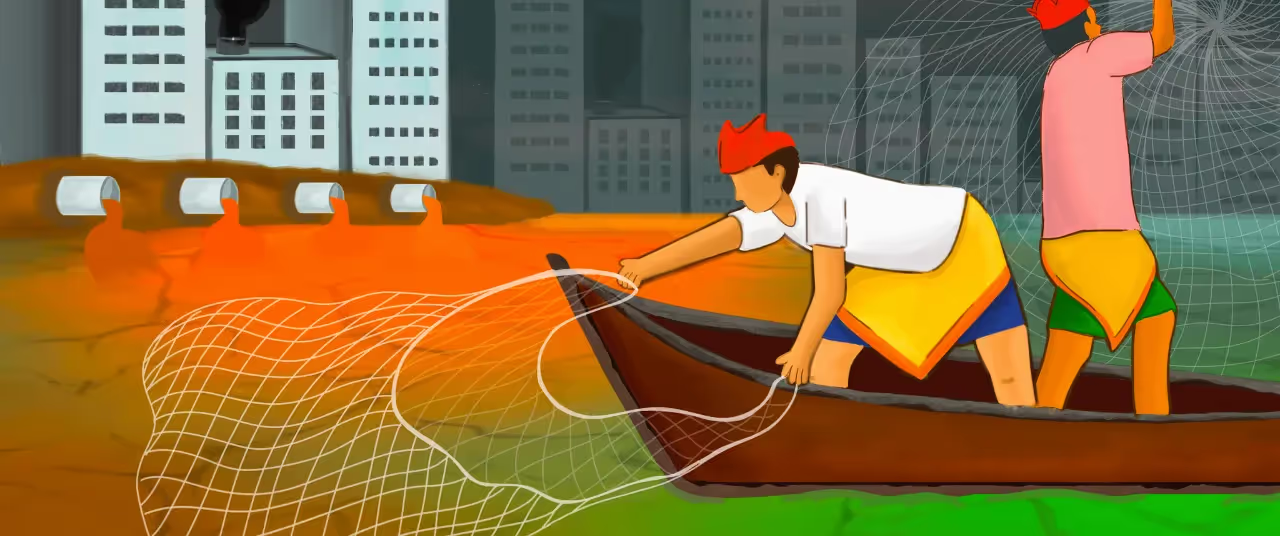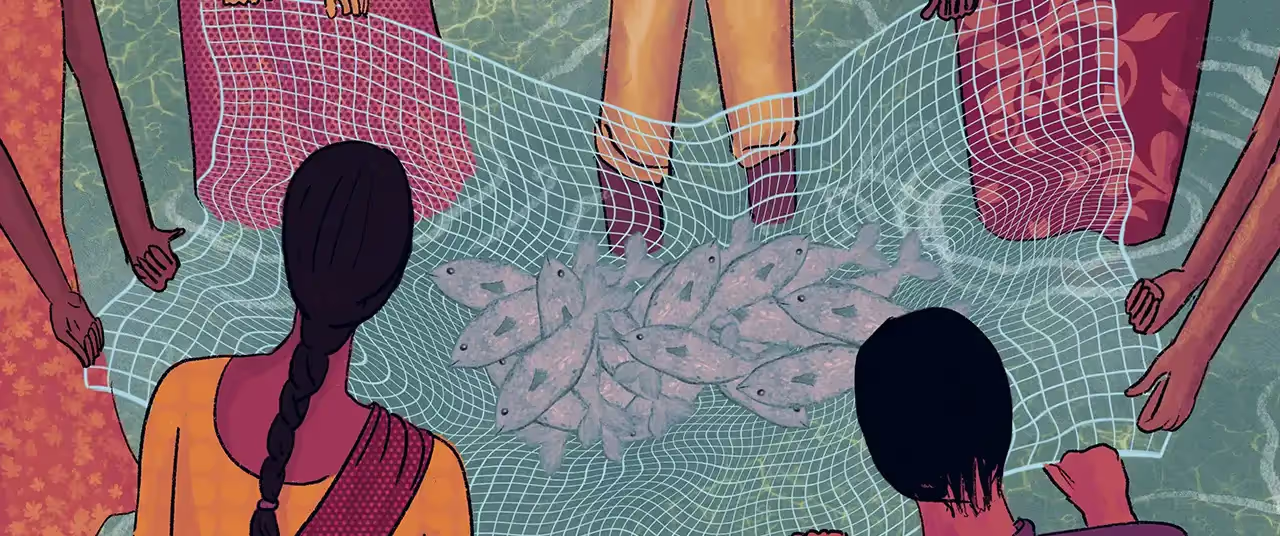The journey of Tilapia from miracle fish to ecological menace in Indian waters






Before becoming an aquaculture consultant and probiotic shrimp supplier, Apuchand Eluri farmed fish for 15 years on his 130-acre farm in Khammam district, Telangana. Today, an uninvited guest threatens to upend his livelihood.
"Tilapia feed much faster than the Carp because there are more of them, and they are very active feeders. They have robust spines on their fins, which prevent other fish from attacking them and eating the feed. They're more dominating and territorial. They eat the feed first, and the other cultured fish eat the rest," he said.
Tilapia, once hailed as a potential solution to global food security, has become both a blessing and a curse for Indian fish farmers and ecosystems alike.
A fish with a mission
In 1988, WorldFish and its partners started the Genetic Improvement of Farmed Tilapia (GIFT) project to develop a faster-growing strain of Nile Tilapia fit for small-scale and commercial aquaculture. According to the Consortium of International Agricultural Research Centers (CGIAR), GIFT has since become a lifeline for small-scale farmers, providing a sustainable source of income, food, and nutrition while helping them adapt to climate change.

A 2022 study by WorldFish and the Confederation of Indian Industry (CII) revealed a growing interest in Tilapia farming across India's eastern, western, and southern states. This trend is driven by rising prices of Carp and sea catch. India's current Tilapia production stands at approximately 70,000 metric tons, with 30,000 metric tons from aquaculture and 40,000 metric tons from wild catches.
The CII study projects India's Tilapia market to grow to over 0.766 million metric tons by 2027 and exceed 2.155 million metric tons by 2032. This aquatic chicken, as it's sometimes called, could significantly boost India's ambitious fish export goals.
Farmer’s dilemma
Globally, Tilapia farming has grown much faster than the aquaculture sector and other farmed aquatic species categories over the last twenty years. But In Andhra Pradesh, India's aquaculture hub, the Tilapia boom feels more like a bust.
“Carps fetch anywhere between Rs 80 to Rs 100 per kg. But Tilapias fetch around Rs 10 to Rs 20 per kg, but their feed costs as much as the Carp. In Kerala, a fish called pearl spot or Etroplus, a close cousin of Tilapia, fetches almost 300 to 450 rupees per kg because of its taste,” said Eluri.
Eluri suffered significant losses due to the Tilapia invasion. To cut losses, farmers like Eluri have become creative, using dried and pulverised Tilapia as fish feed and soil fertiliser or selling it to Sea Bass farms.
Getting rid of Tilapia also proves challenging. “The bigger fish are caught in the nets; however, mid-sized and small fish hide in the soil at the uneven pond bottom. Even if the pond is dried, there will be some eggs or small fish in the slush. They start multiplying once the water fills the pond," he said.
India has a diverse palate. Proper planning is needed because a single species or strategy across the country may not be effective.
KK Vijayan, Former Director of the Central Institute of Brackishwater Aquaculture (ICAR-CIBA) Chennai and Former Head of the Marine Biotech Division, ICAR-CMFRI, Kochi, said Tilapia is not a one-size-fits-all solution. "India has a diverse palate. Proper planning is needed because a single species or strategy across the country may not be effective,” he said.
Tilapia that grows in brackish water are tastier and have more nutritional value as their bodies release a burst of antioxidants to counteract the salinity stress, he added.

Growing problem
A 2021 study found the Mozambique Tilapia to be the most extensively distributed invasive fish in the region. In just two years, their population in the Yamuna River jumped from a fraction to 3.5% of total fish species. In Rajasthan's Jaisamand Lake, they've reduced the average weight of major Carp and threatened endangered Mahseers. Tilapias have infiltrated biodiversity hotspots like the Andaman Islands and the Western Ghats and are thriving in the marine environment in Palk Bay, Tamil Nadu.
According to Smrithy Raj, a postdoctoral fellow at the University of Kerala and one of the study's authors, the Western Ghats contain more than 300 species of freshwater fish, of which nearly 70% are endemic. Roughly one-third are threatened by flow regulation, pollution, invasive species, climate change, and overexploitation.
“And among these, biological invasion is the most rapid and widespread. When there are a lot of new invasive species coming in, there is a higher chance that some species in the wild will die out,” he said. Raj said the number of non-native exotic species in the Western Ghats has doubled after the floods.
“Earlier, only the Mozambique Tilapia variety was found, but at present, Nile Tilapia has become dominant in the water bodies. They compete with native fish species for food and shelter. The Pearlspot Cichlid (Etroplus suratensis), Kerala's state fish, is at high risk due to the invasion of Tilapia, as both species share a similar niche,” he added.

Tilapia farming also has its own set of challenges.
An expert from the Indian Council of Agricultural Research (ICAR) said Tilapia can meet the protein demand and is very easy to grow, which is why it is being promoted worldwide. However, the highly contagious Tilapia Lake virus, which causes sudden mortality in Tilapia, is a cause for concern.
According to Vijayan, to achieve a blue revolution, the government should focus on various fish species instead of a single species. “Tilapia has its market niche, depending on various factors. We could take a holistic approach based on consumption patterns. Understanding these consumption patterns and marketing strategies is crucial,” he said.
Meanwhile, Eluri said the government intervention is unwieldy.
“Mozambique Tilapia is a wild species, but the government is promoting the genetically modified variety (GIFT), which grows to a larger size. However, because the Mozambique Tilapia has been around for decades, people have developed an aversion towards the fish. As a result, even if farmers want to culture GIFT, there are no buyers.” he said.
In the end, the Tilapia dilemma is more than just a question of fish farming—it's a test of our ability to balance progress with preservation, innovation with tradition, and short-term gains with long-term sustainability.
Explore other topics
References
1. WorldFish. Genetically Improved Farmed Tilapia (GIFT). https://worldfishcenter.org/pages/gift/
2. CGIAR. Genetically Improved Farmed Tilapia (GIFT). https://www.cgiar.org/innovations/genetically-improved-farmed-tilapia-gift/
3. WorldFish. (2023, June 15). Tilapia aquaculture potential in India: Meeting food, nutritional, and livelihood security. https://worldfishcenter.org/blog/tilapia-aquaculture-potential-india-meeting-food-nutritional-and-livelihood-security
4. The Economic Times. (2022, March 7). Andhra Pradesh rides the wave, leads India's fishing and aquaculture sector with 41% share. https://economictimes.indiatimes.com/news/india/andhra-pradesh-rides-the-wave-leads-indias-fishing-and-aquaculture-sector-with-41-share
5. Raghavan, R., et al. (2021). Distribution of alien invasive species in aquatic ecosystems of the southern Western Ghats, India. https://www.researchgate.net/publication/354627061_Distribution_of_alien_invasive_species_in_aquatic_ecosystems_of_the_southern_Western_Ghats_India
6. Raghavan, R., et al. (2022). Unusual abundance of invasive Tilapia species in coastal waters of Devipattinam, Palk Bay, India. https://www.researchgate.net/publication/371968881_Unusual_abundance_of_invasive_Tilapia_species_in_coastal_waters_of_Devipattinam_Palk_Bay_India
7. Raghavan, R., et al. (2021). Factors influencing the distribution of invasive tilapia species in Indian waters. https://www.sciencedirect.com/science/article/pii/S2468550X21000599




-min.avif)






